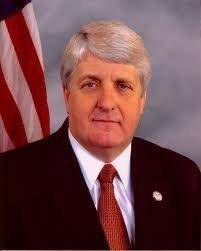House National Parks, Forests, and Public Lands Subcommittee Chairman Rob Bishop (UT-01) announced that he is “concerned and troubled” by the contents of an internal email exchange between National Park Service (NPS) officials. The emails, recently obtained by House Natural Resources Committee Members, contain alarming new evidence that the Administration lacked scientific justification to impose a 20-year ban on uranium development on one million acres of federal land in Arizona. An email from a NPS hydrologist reveals that a draft environmental impact statement (DEIS) “goes to great length in an attempt to establish impacts to water resources from uranium mining” noting that, “It fails to do so…”
“I am concerned and troubled by the Department of Interior’s decision to proceed with the ban despite the fact their own experts cautioned that scientific evidence was lacking. It is now increasingly apparent that the decision was motivated by politics rather than science as the Administration would have us believe. We feared this was the case when the DOI announced its intentions in January, and it is unfortunate that it has proven to be true,” said Congressman Bishop. “These emails illustrate that Secretary Salazar blatantly ignored the scientific analysis in order to advance the Administration’s narrow-minded political agenda. The Administration is working hard to protect certain interests, but just not those of the American people.”
In an effort to further examine this matter, Congressman Bishop along with House Natural Resources Committee Chairman Doc Hastings (R-WA)В today sent a letter to U.S. Department of Interior Secretary Ken Salazar requesting all additional documents pertaining to the DEIS, Final Environmental Impact Statement, and the Record of Decision, such as briefing papers, memoranda, notes, and emails.
“These documents show the Administration’s practice of placing politics before science. The withdrawal order is an affront toВ all those in Utah who depend on the jobs created by the Uranium industry in San Juan County, especially the Native American communities that account for more than 50% of the workers at the mill. В The Blanding Mill is vitally important to our local economy and relies on receiving uranium from northern Arizona mines to stay in operation.В Unemployment in this area is extremely high, especially on the Navajo reservation where it has been over 50%. The ban is not only hindering our nation’s ability to produce domestic uranium, but is also having a negative impact on job creation at a time when we need it most,” said San Juan County, Utah Commissioner Phil Lyman
“To see these National Park Service documents re-enforce the contention we have made from the beginning, namely that the science on the ground shows no adverse impact on the Colorado River drainage outside of or through the Park, is heartening. What is not heartening is that the Administration completely ignored their own scientific advisors and used the Grand Canyon as a political foil.В The people I represent in Mohave County want the jobs those uranium mines will bring.В The fact that career scientists inside the agencies confirm that mining is safe and does not harm the Park or the watershed will make the people of Mohave county and southern Utah furious,” said Mohave County, Arizona SupervisorВ Buster D. Johnson.
Excerpts from the emails:
В
“The DEIS goes to great lengths in an attempt to establish impacts to water resources from uranium mining. It fails to do so, but instead creates enough confusion and obfuscation of hydrogeologic principles to create the illusion that there could be adverse impacts if uranium mining occurred.”
“There exists no information we could find that would contradict his conclusion, nor any hypotheses suggested as to how contamination of park waters might physically occur.”
“This is obviously a touchy case where the hard science doesn’t strongly support a policy position. Probably the best way to вЂfinesse’ this would be fall back on the вЂprecautionary principle’ and take the position that in absence of even more complete certainty that there is no connection between uranium mines and regional ground water, we need to be cautions[sic]??
Background:
The uranium withdrawn from production represents 40 percent of our nation’s domestic uranium resources and the deposits contain the highest-grade existing in the United States. According to a report conducted by the American Clean Energy Resources Trust, a ban on mining in this region could impact as many as 1,000 jobs and more than $29 million in economic revenue.
On January 9, 2012В the DOI announced that it would impose a 20-year ban on uranium development on approximately one million acres of federal land in northern Arizona.В The decision disregarded a negotiated compromise between the mining industry and environmental groups, which affirmed the compatibility of mining with conservation interests in areas not locked away by the Wilderness Act.В The historic agreement was partially codified in the Arizona Wilderness Act of 1984.

